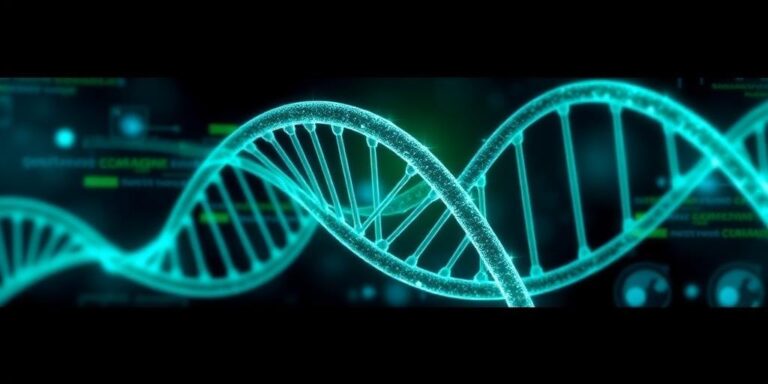The Indispensable Role of Software in Synthetic Biology (2028)
Synthetic biology, once a futuristic concept, is rapidly becoming a tangible reality. As we advance into 2028, the field’s progress is increasingly interwoven with sophisticated software solutions. This article explores the critical role software plays in driving innovation, streamlining processes, and unlocking new possibilities in synthetic biology.
What is Synthetic Biology?
Before diving into the software aspects, let’s briefly define synthetic biology. It involves designing and constructing new biological parts, devices, and systems, or re-designing existing natural biological systems for useful purposes. These purposes range from creating biofuels and pharmaceuticals to developing biosensors and novel materials.
The Core Functions of Software in Synthetic Biology
Software isn’t just a peripheral tool in synthetic biology; it’s central to the entire workflow. Here are some key areas where software makes a significant impact:
- Design and Modeling:
- CAD Tools for Biology: Just as CAD software is essential in engineering, specialized software allows researchers to design DNA sequences, predict protein structures, and model complex biological systems. These tools enable scientists to visualize and simulate how different biological components will interact, reducing trial-and-error in the lab.
- Simulation Software: Simulating biological processes helps in understanding system dynamics and predicting outcomes. Software platforms like COPASI and CellDesigner are invaluable for creating and analyzing models of biochemical networks.
- Data Management and Analysis:
- Bioinformatics Pipelines: Synthetic biology generates vast amounts of data, from genomic sequences to metabolic profiles. Software pipelines are crucial for processing, analyzing, and interpreting this data. Tools like Galaxy and Bioconductor provide frameworks for building custom bioinformatics workflows.
- Laboratory Information Management Systems (LIMS): LIMS software helps manage samples, track experiments, and ensure data integrity in synthetic biology labs. This is essential for reproducibility and collaboration.
- Automation and Robotics:
- Robotics Control Software: Automated liquid handling systems and robotic platforms are increasingly used to perform repetitive tasks in synthetic biology. Software controls these robots, enabling high-throughput experimentation and reducing human error.
- Microfluidics Control: Microfluidic devices allow for precise control over the cellular environment. Software is used to design and operate these devices, enabling complex experiments with minimal reagent consumption.
- Optimization and Control:
- Genetic Circuit Design Software: Software tools aid in the design of genetic circuits, which are fundamental building blocks in synthetic biology. These tools optimize circuit designs for desired functions and predict their behavior under different conditions.
- Feedback Control Systems: Implementing feedback control in biological systems requires sophisticated software. This software monitors system performance and adjusts parameters to maintain desired outcomes, improving stability and robustness.
Examples of Software in Action
To illustrate the impact of software, consider these real-world applications:
- Metabolic Engineering: Software tools are used to design metabolic pathways in microorganisms, optimizing the production of valuable compounds like biofuels and pharmaceuticals. For instance, software can predict the effects of gene knockouts or insertions on metabolic fluxes.
- Biosensor Development: Designing biosensors requires precise control over gene expression and signal transduction. Software helps in modeling sensor behavior, optimizing sensor design, and analyzing sensor data.
- Cell-Free Systems: Cell-free synthetic biology, where biological reactions occur outside of living cells, relies heavily on software for experimental design and data analysis. Software tools help in optimizing reaction conditions and predicting system behavior.
Challenges and Future Directions
Despite the tremendous progress, several challenges remain in the software landscape of synthetic biology:
- Standardization: The lack of standardized data formats and software interfaces hinders collaboration and data sharing. Efforts are underway to develop standards that promote interoperability.
- User-Friendliness: Many software tools are complex and require specialized expertise. Improving the user-friendliness of these tools is crucial for wider adoption.
- Integration: Integrating different software tools into seamless workflows is a significant challenge. Developing integrated platforms that combine design, simulation, and data analysis capabilities is a key priority.
Looking ahead, the future of synthetic biology is tightly coupled with advances in software technology. We can expect to see:
- AI and Machine Learning: AI and machine learning algorithms will play an increasing role in analyzing biological data, predicting system behavior, and optimizing designs.
- Cloud Computing: Cloud-based platforms will enable researchers to access powerful software tools and computational resources from anywhere in the world.
- Open-Source Software: The open-source movement will continue to drive innovation, with researchers collaborating to develop and share software tools and resources.
Conclusion
In 2028, software is an indispensable component of synthetic biology. From designing and modeling biological systems to managing and analyzing data, software drives innovation and accelerates progress in the field. As technology advances, we can expect software to play an even greater role in unlocking the full potential of synthetic biology, transforming industries and improving lives.




